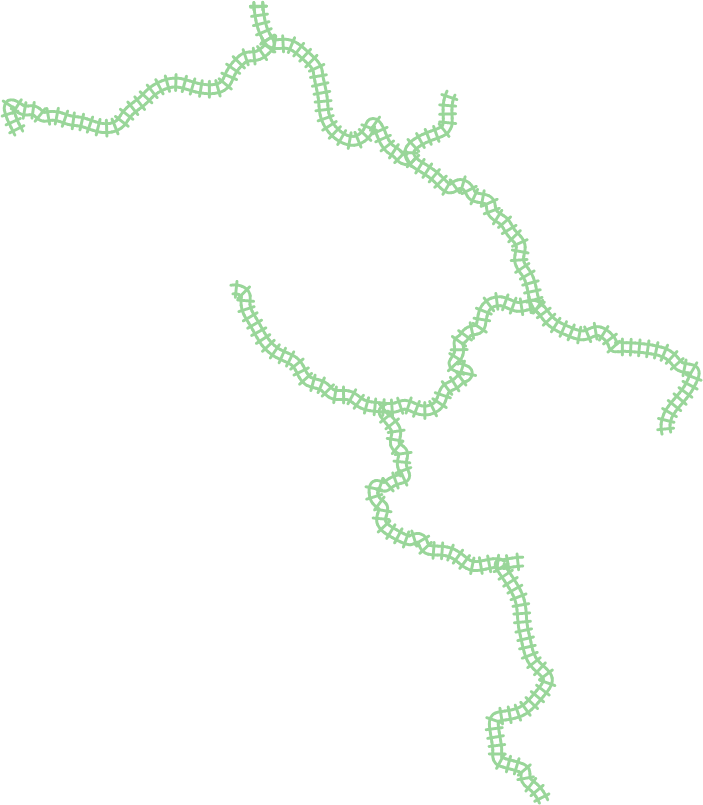Railway and local history...
For more than seven decades Wilsdruff, a small town in middle Saxony, has been the hub of a narrow gauge railway network (750 mm gauge) with more than 100 line kilometres, covering a rural area of more than 800 square kilometres. The first railway link from Freital-Potschappel to Wilsdruff was put in service in 1886.The network had been growing in several stages since and reached its maximum size in 1923 with a total of 43 stations and halts. The lines were constructed as feeders for the main railway and especially for the transportation of agricultural products like sugar beets. Using the connecting line from Gärtitz to the neighbouring network around Mügeln it was possible to rattle by narrow gauge train from Frauenstein in the Ore Mountains as far as Strehla near the river Elbe, though the journey time would have been approximately two days because the timetables were designed to meet rather local needs.The narrow gauge network around Wilsdruff is well known to railway history enthusiasts, for example because of the legendary steam locomotive class VIK and the famous collapse of the so called Wurgwitz bridge under the weight of a freight train.Between 1966 and 1973 the service on all line was withdrawn as a result of the transportation policy in the German Democratic Republic (East Germany). Reasons to do so were the beginning motorisation of private households even in rural areas and the growing possibilities for replacement of public railway transport services by bus and lorry.Today we remember with a kind of nostalgic feeling on the big time of the narrow gauge railways in the area around Wilsdruff.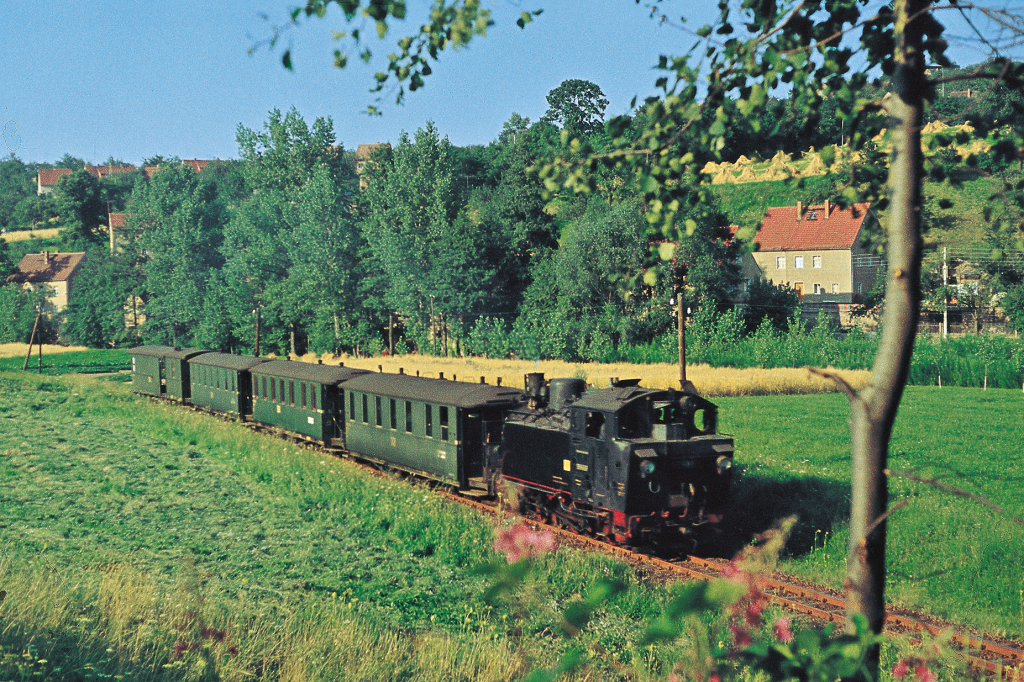
Passenger train bound for Wilsdruff in the Little Triebisch valley, 1965, photo: L. Dachsel

99 684 in front of the Wilsdruff engine shed
11th September 1971, archive P. Wunderwald
...kept alive
Seit vier Jahrzehnten engagieren sich Eisenbahnfreunde für die Erhaltung noch vorhandener Sachzeugen und die Erforschung der Geschichte der Schmalspurstrecken rund um Wilsdruff. Dazu wurde 1984 die IG Verkehrsgeschichte Wilsdruff gegründet. Ergebnisse dieser Aktivitäten sind die Eisenbahnhistorische Schauanlage am ehemaligen Hp Wilsdruff, das Narrow Gauge Railway Museum "Wilsdruff Historical Engine Shed" and the famous Wunderwald BahnbücherIn addition, the most attractive sections of the former railway lines invite you to go hiking or cycling in the region. Our association wishes you a comfortable virtual journey from the past to the present of what was once the largest Saxon narrow-gauge railway network. Eindeichn biddää! (Please climb aboard the train!)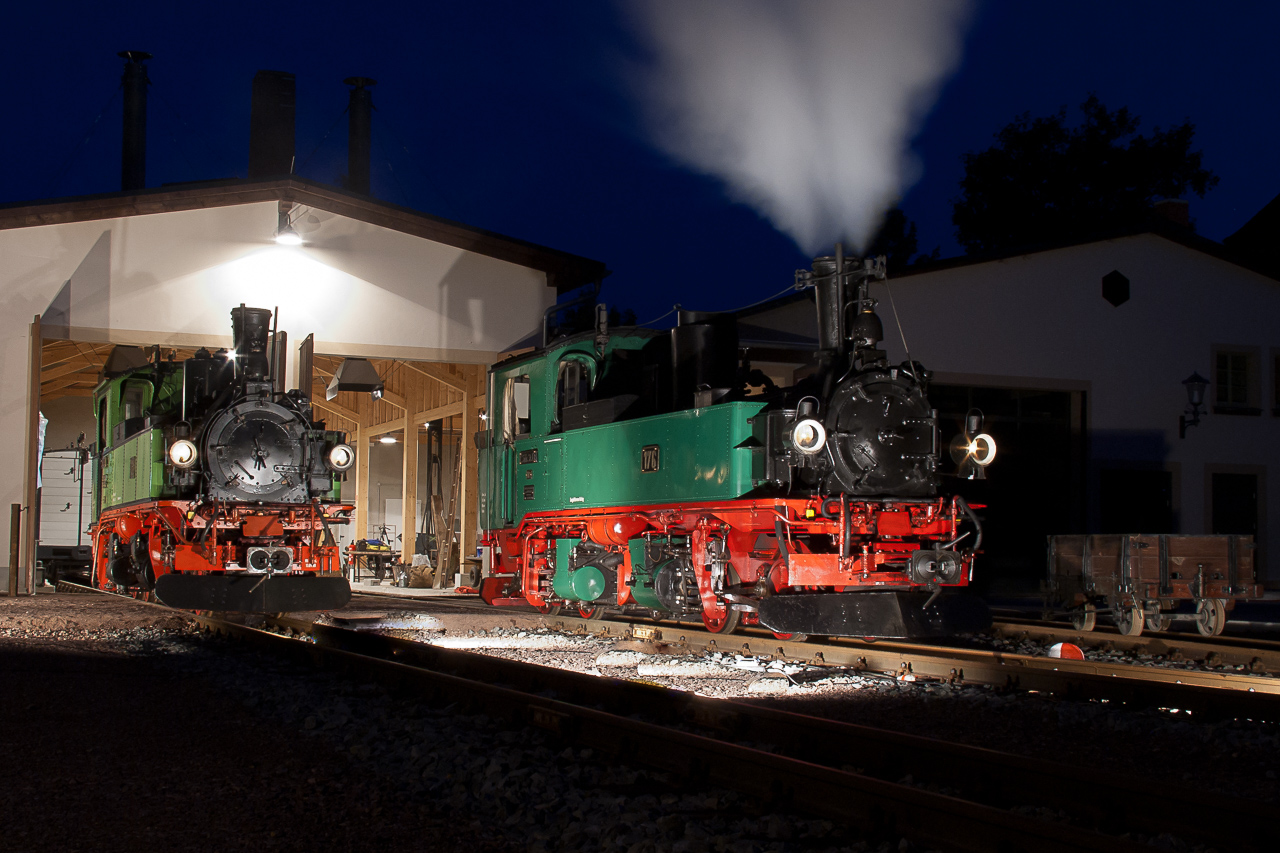
IVK Nr. 132 und 176 in front of the Wilsdruff engine shed
14th August 2009, photo: R. Jugelt
News
04.02.2024
Erster Arbeitseinsatz 2024
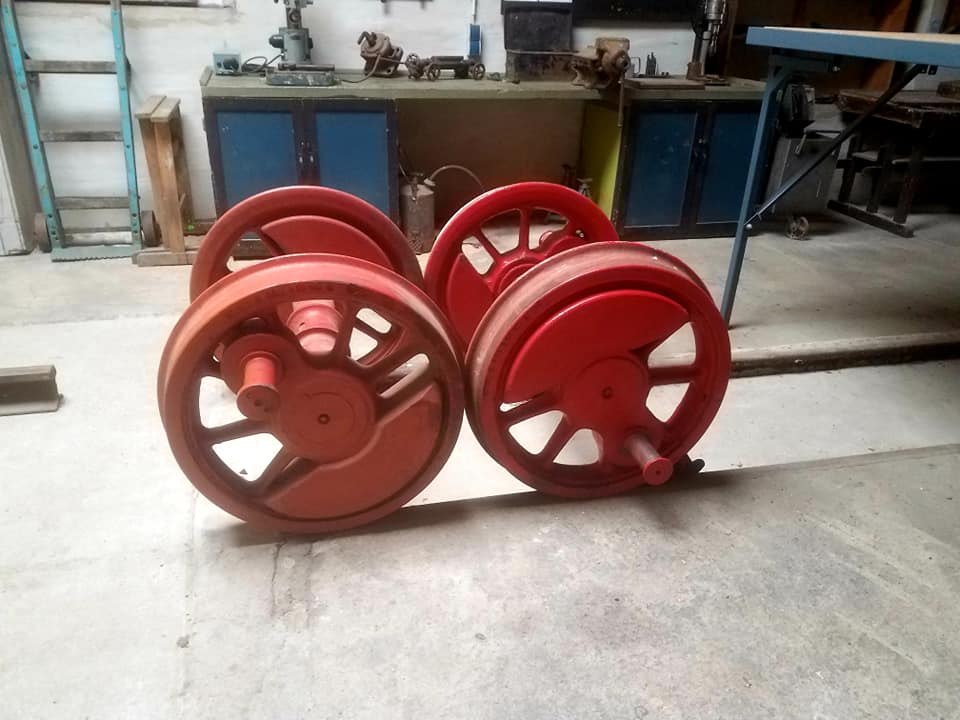
04.02.2024
Relaunch unserer Homepage
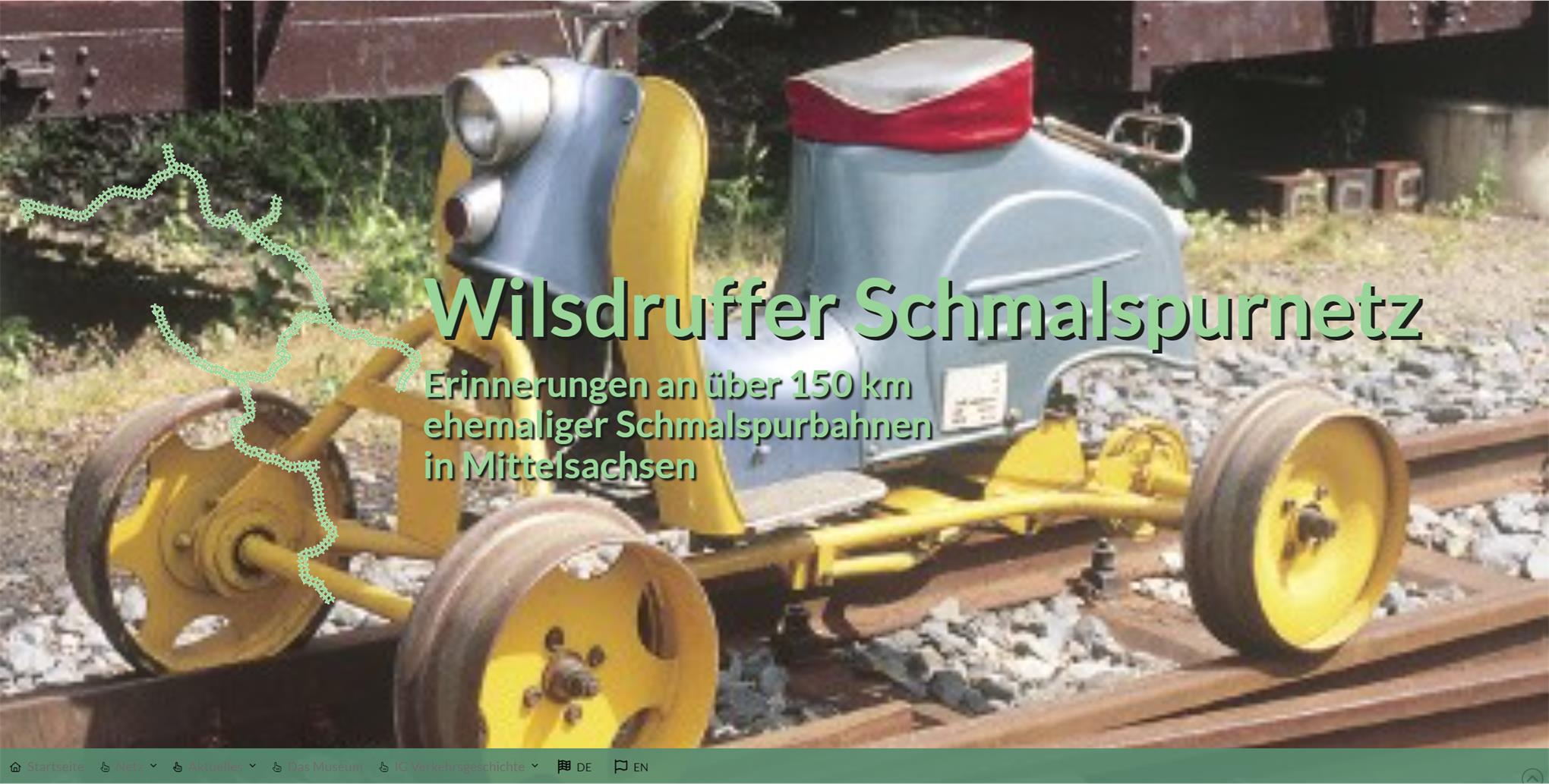
31.01.2024
40. Jahrestag der Vereinsgründung

13.01.2024
Jahresrückblick 2023
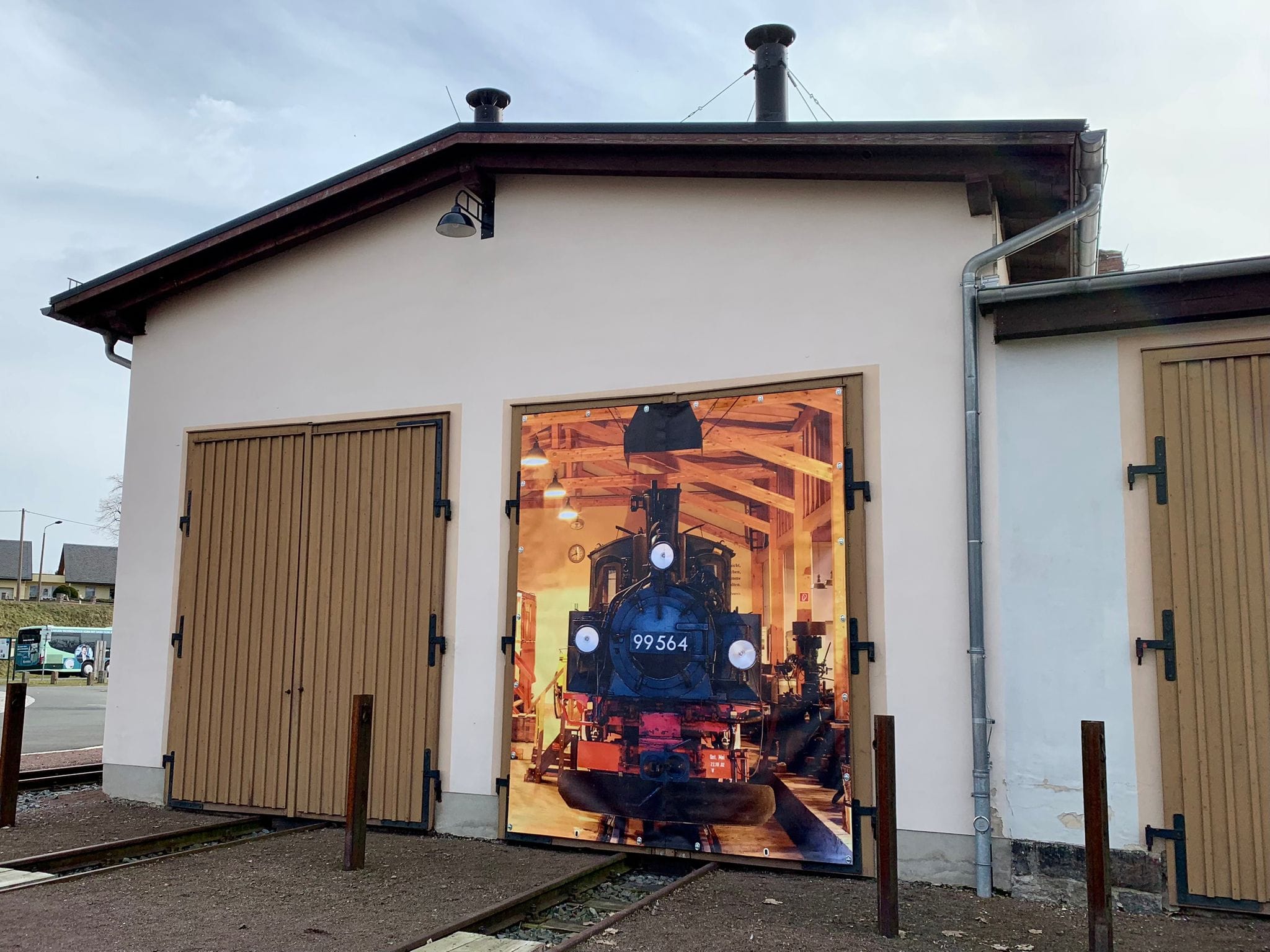
21.04.2023
Buch Klingenberg-Colmnitz – Frauenstein – ab sofort erhältlich!
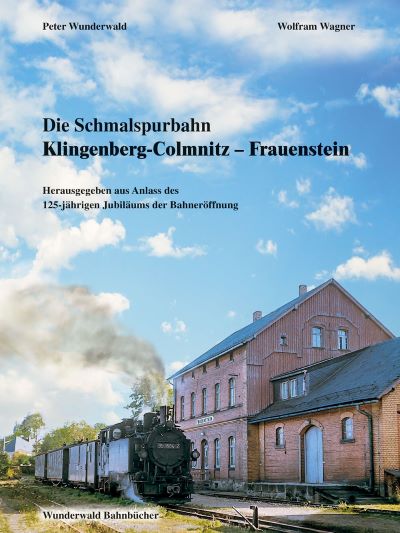
14.03.2023
Spendenaktion – Vom Güterwagenkasten zum betriebsfähigen Behelfspersonenwagen
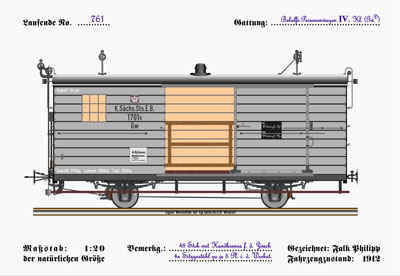
06.02.2022
Potschappel – Wilsdruff in bewegten Bildern
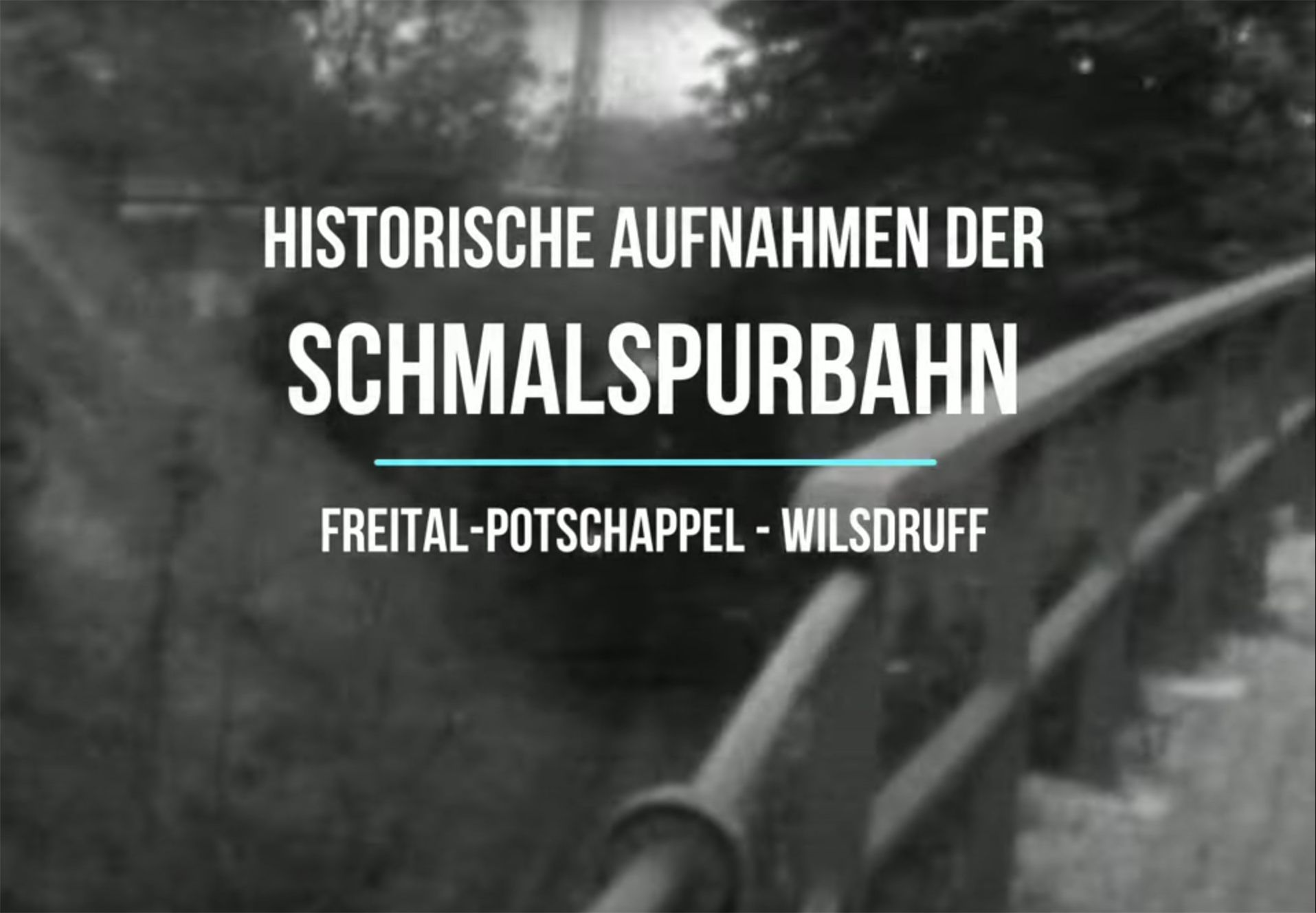
Events
20.04.2024
Wilsdruffer Techniktreff
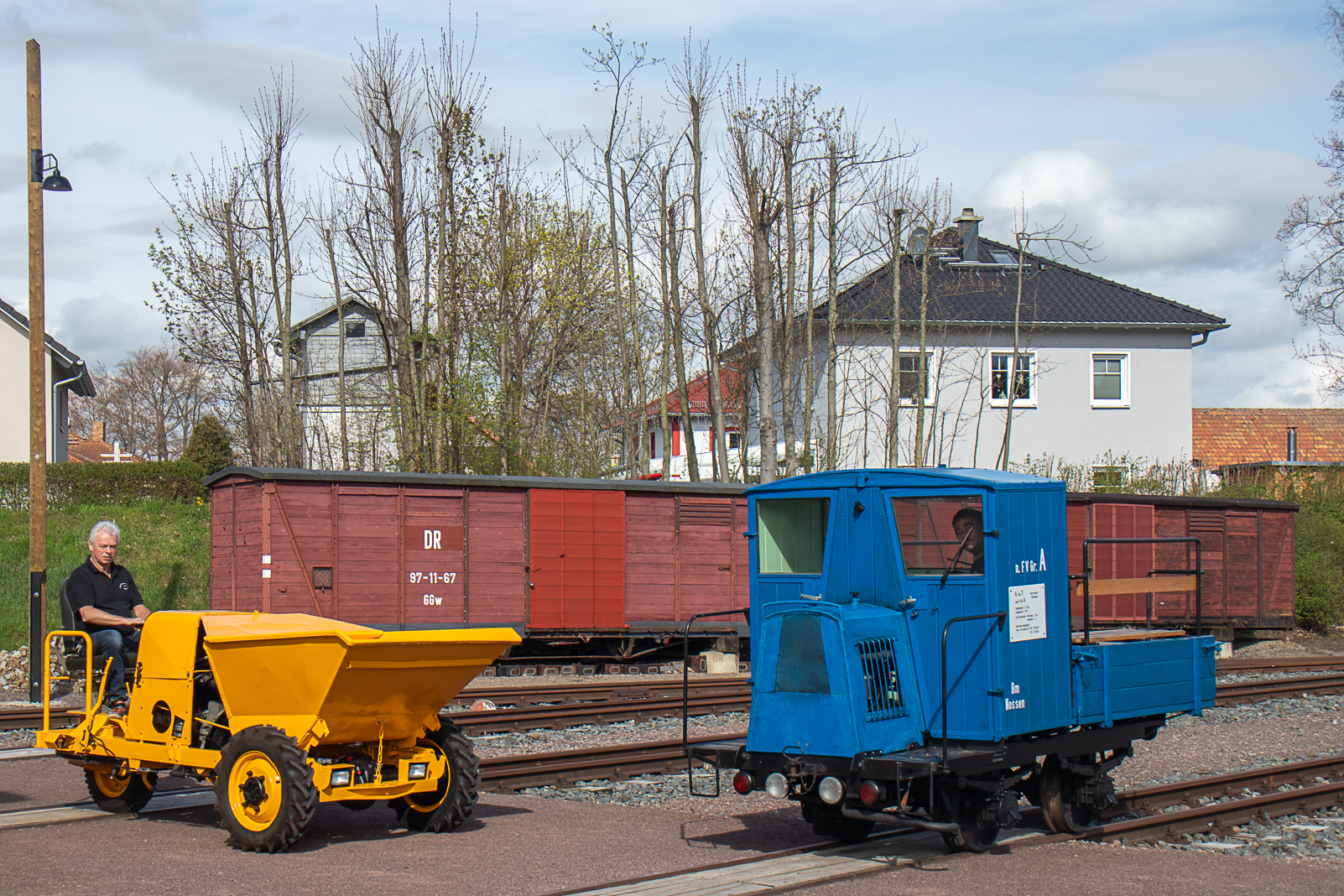
21.04.2024
Wilsdruffer Techniktreff

16.06.2024
Öffnungstag Schmalspurbahnmuseum Wilsdruff
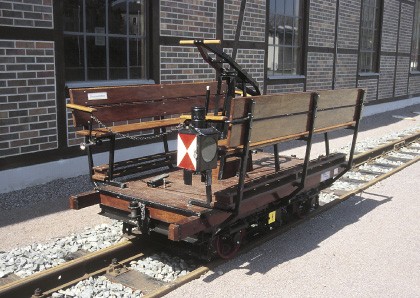
01.09.2024
Öffnungstag Schmalspurbahnmuseum Wilsdruff

13.10.2024
Öffnungstag Schmalspurbahnmuseum Wilsdruff

30.11.2024
Wilsdruffer Modellbahnausstellung
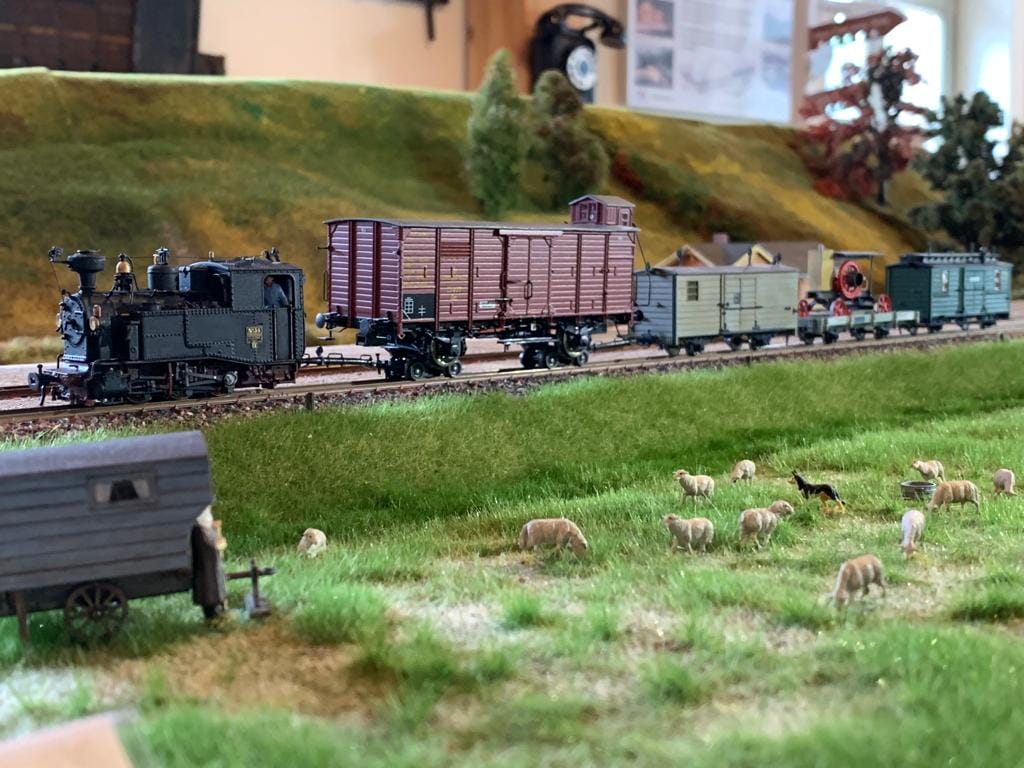
01.12.2024
Wilsdruffer Modellbahnausstellung

